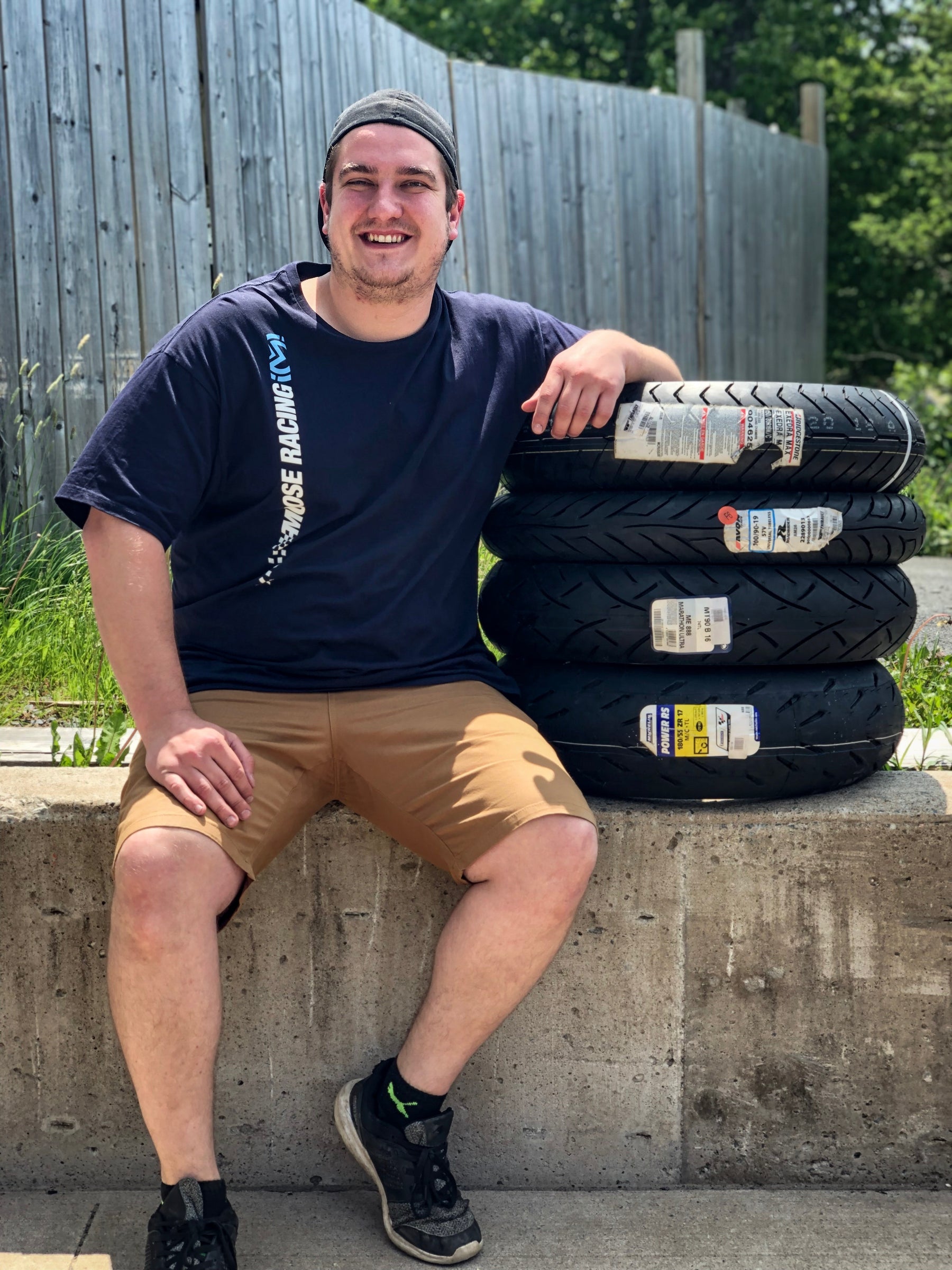Simply select "affirm" at checkout.

Motorcycle Tires: Basics with Brett
Motorcycle tires are, in my opinion, one of the most important components on your machine – they are the connection between you and the road. We all know that a poor connection between a motorcycle and the road can be hazardous and even life threatening. This is why it is useful to know a little bit about motorcycle tires that are currently on, or that you will be buying for your motorcycle to ensure that what you are getting will work properly with the machine. It is also important to know how to inspect a motorcycle tire for ware and/or damage to make sure you can safely enjoy your ride.
Intro to Motorcycle Tires
The most general or basic break down of motorcycle tires is into categories of the original intended use of the machine (i.e. super sport, sport touring, cruiser, dual sport and scooter). Each tire manufacturer will most often offer 3 or more options in each category consisting of an entry level/economy tire, mid-level tire, and a high performance or high mileage tire. What this means is that when shopping for replacement tires, start by looking in the category your machine is designed for. This being said, some bikes pull double duty and may cross between categories, in which case you would be looking for a tire for what you use the bike most.
When buying replacement tires for your motorcycle cycle it is strongly recommended that you stay with the manufacturers original size, speed and load ratings. This is because the motorcycle manufacturer has spent countless hours and resources designing a machine that handles precisely and confidently with particular tires. Here at HFX Motorsports we respect the fact that many people customize and modify their motorcycles, and may have to consider different tire options to fit the customer’s build. When ordering tires outside of the recommended options, we can help to explain the differences in tires and help to choose something safe that suits your needs.
Reading M/C Tires
All of the information you need to know about the type, size, load rating, speed rating, direction of travel, date code, and intended position (front or rear) are molded on the side of all motorcycle tires.

Using the diagram shown above we can see the tire size is 180/55ZR-17. The number 180 is the width of the tire in mm and 55 is a ratio of the side wall height of the tire. This means the sidewall height is 55% of the width or approx. 99mm. The last number in a tire size sequence is the size of the rim the tire fits in inches. Other designations you will notice in the size of this tire is the Z, which is the speed rating of the tire. Please note that the speed rating is not always located in the size of the tire but rather could be located with the load rating.

The R in the tire size is to specify the tire’s construction as radial, this can be replaced with a B for a bias construction or no letter which is also bias-ply construction. Motorcycle tires will also indicate the position of the tire whether front or rear, and a direction arrow for the direction of rotation. Other indications you will notice is a number for the load rating, tube type or tubeless, and the date code indicating the year and week the tire was manufactured 0417.
Tire Inspection
Knowing the difference between motorcycle tires is important, but almost equally as important as knowing how to inspect and maintain motorcycle tires. Old and worn motorcycle tires will handle differently than new tires, potentially putting you at risk of tire failure, reduced traction or poor handling characteristics. Typically every 2 or 3 rides you should check and inspect your tires as the condition of a tire can change relatively quickly. The things you will want to check when inspecting your tires are air pressure, weather cracks, uneven tread ware, punctures or damage, and tread depth. The recommended air pressure is typically located on the swing arm of the machine and it is a good idea to stick close to this as it will keep your tires from prematurely waring. Another thing to note is that the legal limit for minimum tread depth is 2/32. A tread depth gauge can be found at most auto parts stores for a few dollars. Many tires will also have a ware bar in between the treads, and once the tire has worn even with the ware bar, it is time for a replacement.
Conclusion
With a little common sense and few minutes of your time, you can ride in confidence knowing that the tires under you will get you where you need to go safely. Inspecting tires is a quick and simple process that shouldn’t be ignored. If you are still unsure about the tires on your machine, go to or call your trusted local shop for a second opinion. Most shops will have tips on what to look for in regards to tires and would be happy to answer any questions you may have. Replacing tires can get overwhelming with so many options and brands available. This is when local shops similar to our own should be used as an important resource. We can make recommendations on a higher mileage tire and what kind of trade-offs to expect, or we could recommend a tire that offers more grip and performance based on your needs.

Brett Vanderkooi - Fun Expert, HFX Motorsports
Have questions? Looking for a quote? Contact us today:
TEXT or call (902) 442-4046
More contact info here!
















Leave a comment